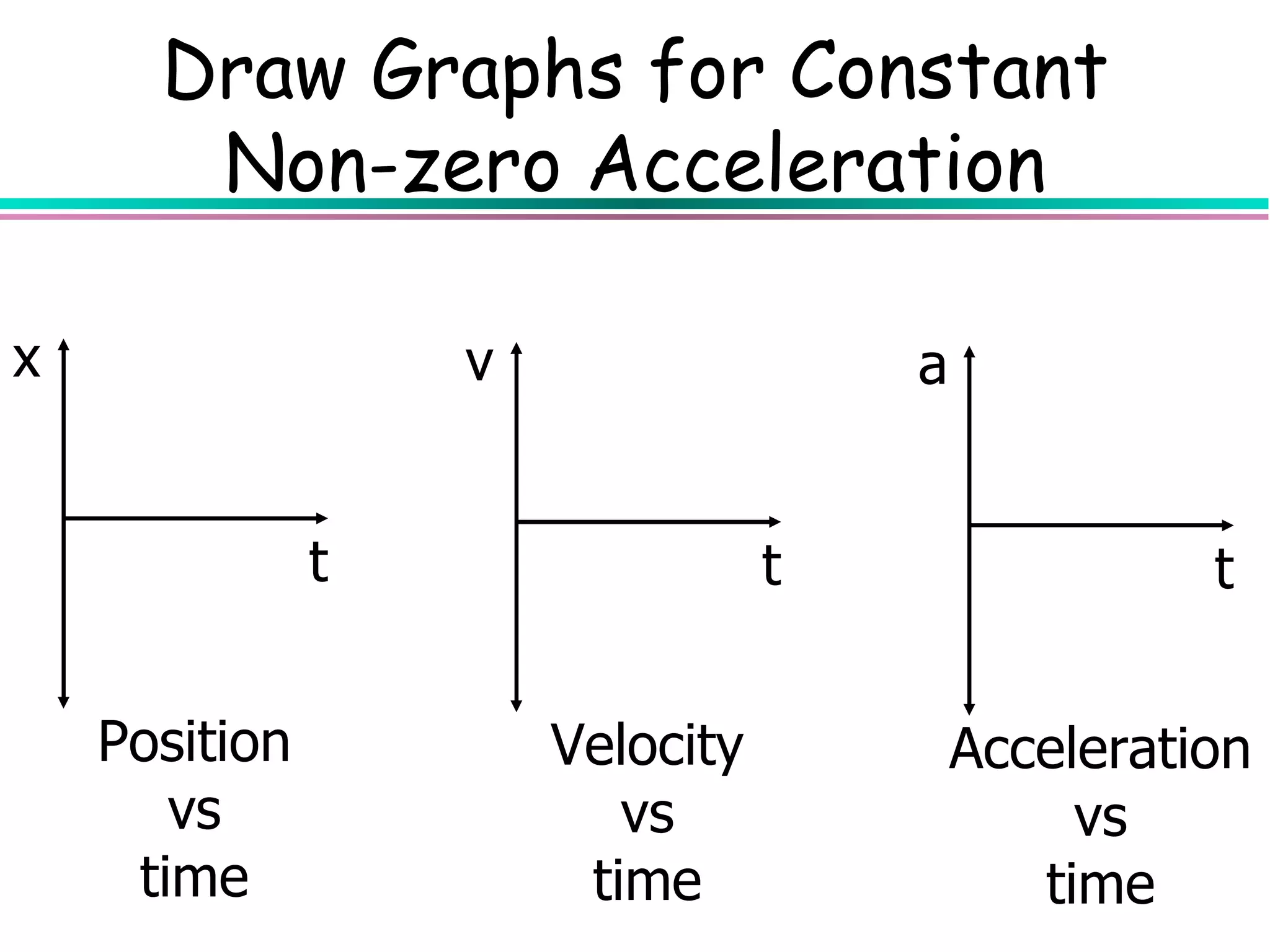This document introduces key concepts of 1-D kinematics including:
1) Distance refers to the total path traveled while displacement refers to the change in position from initial to final point.
2) Kinematics describes motion without considering causes, and 1-D kinematics refers to motion in a straight line.
3) Graphs can distinguish between distance and displacement, with displacement being the straight line segment between initial and final points.
4) Key concepts such as average speed, average velocity, acceleration, and free fall are introduced along with relevant equations and demonstrations.




































































